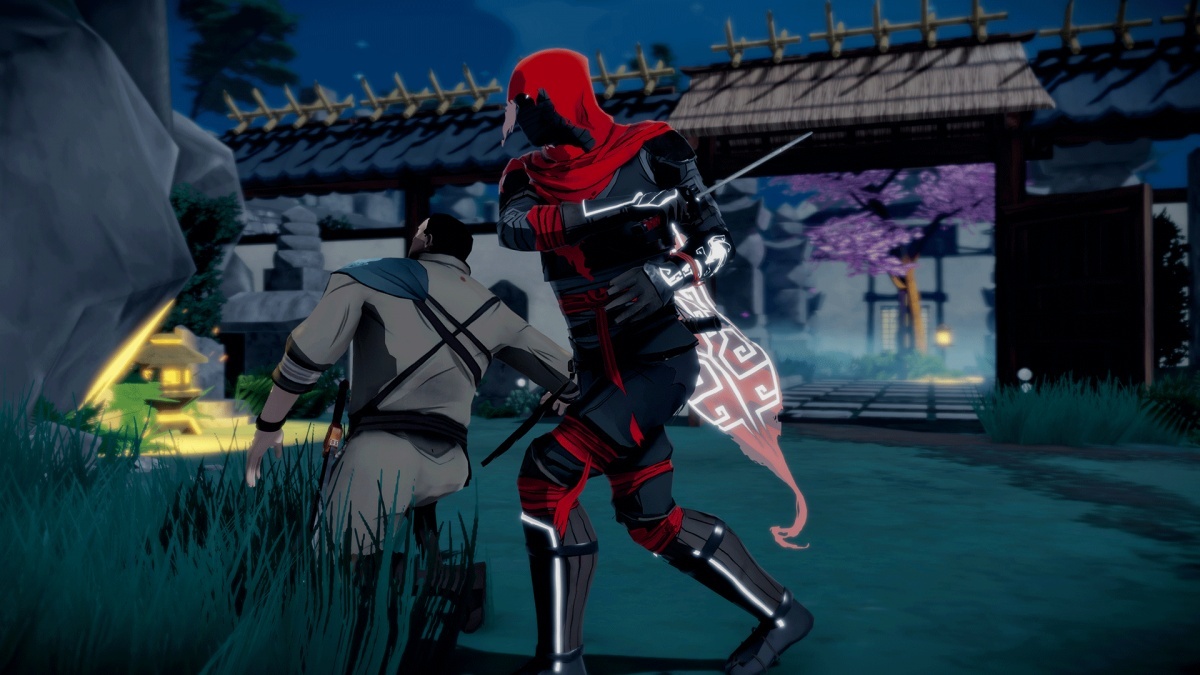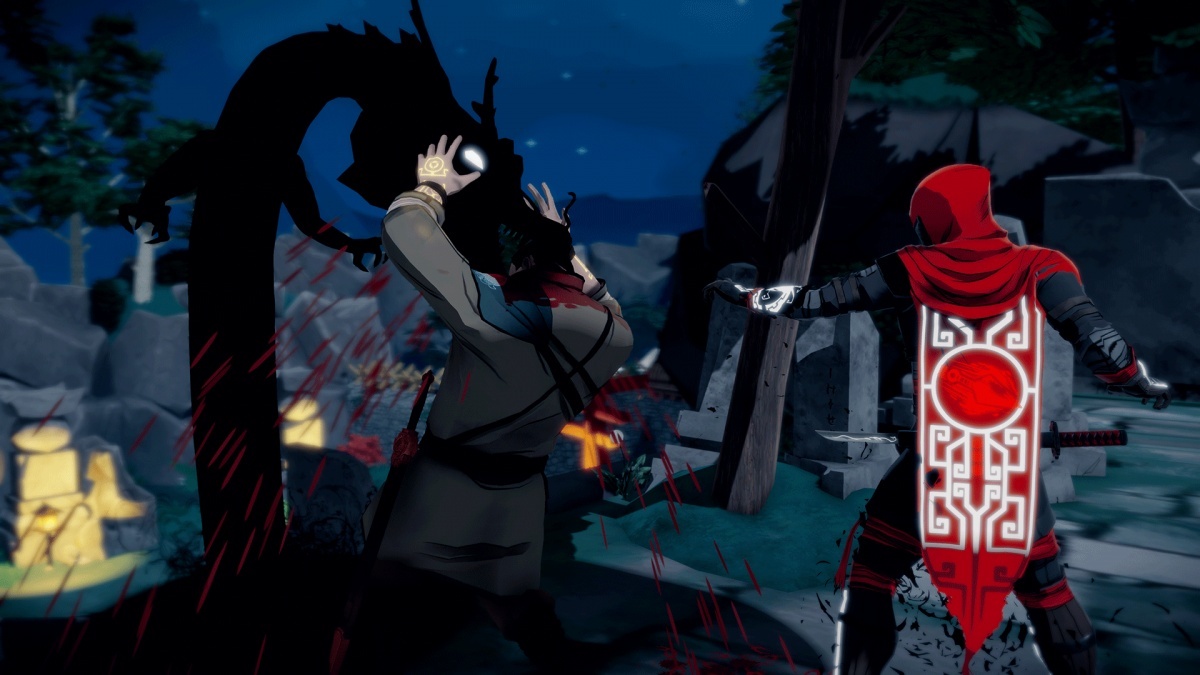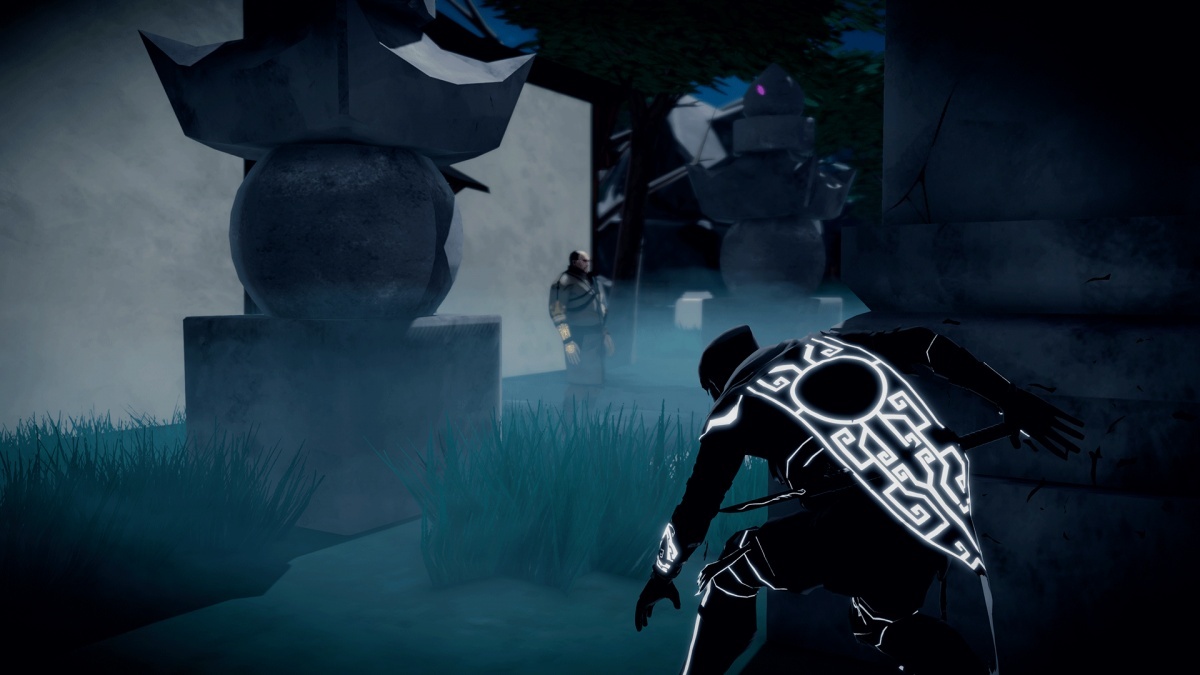Aragami (PlayStation 4) Review
By Josh Di Falco  19.11.2016
19.11.2016

Aragami is a mystifying stealth game that follows the titular vengeful spirit who is summoned by a captive called Yamiko, after her clan were slain by the Kaiho, the Army of Light. This third-person title features thirteen open-world stages, and the ninja elements of keeping in the shadows while sneaking around and killing the enemy still remains, but with supernatural elements thrown in. Being a spirit, Aragami has the power to teleport between shadows, among other abilities. Lince Works' ninja title feels a lot like the Tenchu series, while still injecting enough new elements to make this adventure feel original.
The opening scenes set the tone for the rest of Aragami, with a comic-drawn style of art. The locations and enemies look pretty, with a dreary and bleak colour palette that does not really make any of them stand out. This is in contrast to the ninja himself, with his bright red cloak that sets him apart from the rest of the world. The contrast underlies the overall scheme of "Dark vs. Light," with Aragami representing the darkness and the evil manifestations feared in the shadows.
Due to his form as a spirit, Aragami uses power drawn from the shadows to lurk, sneak around and assassinate enemy guards. Starting with the Shadow Leap ability, Aragami can teleport to a shadowed spot on the ground, which is particularly useful for killing unsuspecting guards on their patrol routes. This ability is useful for also crossing large chasms or scaling to higher places. It's important to understand this because Aragami lacks the basic function to jump, with the teleporting ability serving as a platforming replacement, while providing a mechanical gameplay attack function.

Each of the stages contains an abundance of hidden scrolls that are optional to the longevity of the game. However, they wield a large amount of power, which enables Aragami to learn new offensive and passive abilities to make him a better spirit ninja. As the game progresses, Aragami can learn to create his own shadows with which to teleport to, making the combination of abilities a potent duo. Alternatively, after disposing of a guard, dissolving their bodies into the shadows will hide any evidence of there ever being a kill, thus, covering Aragami's tracks. The more abilities that Aragami has at his disposal, the more it allows for further unique ways to kill the enemies and complete the thirteen stages.
Using these abilities expends essence, monitored by looking at Aragami's back. On his cape is the essence meter of sorts, which displays white runes when the meter is full and red runes when the meter is out of, or running low on, essence. Refill essence by remaining in the shadows for some time to recharge the meter. Therefore, remaining in shadows is paramount to retaining the abilities used to perform kills or make it easier to track enemies and navigate the many locations. However, because Aragami is the essence of darkness, this means that the light is his enemy, and standing in bright areas will equally drain his essence meter, creating further challenges for stage navigation.

The entire game mechanic works well most of the time, with the ability to appear behind an unsuspecting patrol being one of the cooler features. However, trying to understand what is defined as a "shadow" can be troublesome. Even though the levels display strategically marked dark sections, sometimes performing a Shadow Leap to a shadowed spot just does not work because the game does not define it as dark enough to be a shadow. While this is not common, it does seem to happen during stage-defying moments where being caught requires a reset at the previous checkpoint. Graphical issues arise with performing a Shadow Leap near some walls that causes Aragami to fall through the floor into blue space, or teleport into a small room without any means to escape, affecting a stage restart.
Each stage begins with a checkpoint marker, requiring each particular section to be completed in one playthrough. As the enemies are the agents of Light, they wield light swords, which instantly kill Aragami with one mere hit. While the game is predominantly stealth in nature, there really is not any room for flexibility in the case of alerting one or two guards to his presence. Unlike other stealth-based titles, such as Hitman, where stealth is a preferred, but not the only, method of completing levels, Aragami does not leave much wriggle room for initiating enemies in an action-based setting. This can lead to many frustrating moments where the only defence for being caught is to lose the enemies in the shadows, instead of the ability to defend against the onslaught.

Aragami has two different ability skill trees, where passive and offensive abilities are unlocked. In addition to unlocking these abilities, Aragami also possesses a bell, which confuses enemies and causes distractions or even lures them into unsuspecting traps. A raven aids him in displaying the locations of the scrolls, as well, thus making finding them a lot easier and allowing for more abilities to be unlocked quicker. Traps can be laid and explode when a group of enemies are in the vicinity, while Aragami can also temporarily become completely invisible to the foes.
The scrolls also provide a bit of the back-story, as well as the ability points, with chapters detailing the events that preluded the game. Cut-scenes break up the sneaking around, with many of them containing Aragami and Yamiko talking, with a series of text boxes appearing as they each make a sound-byte to accompany the interaction. While there is nothing groundbreaking in the methods used to move the story along, the tale is quite a good one, with a lot more than meets the eye as the game unfolds. The stages do not require each guard to die, but they do provide bonuses in terms of grades for slaying each enemy, or for completing the stage without being caught. The grading system is good for those who wish to replay and earn better scores, but apart from that, Aragami is pretty slim on reasons for coming back.

Cubed3 Rating
Very Good - Bronze Award

Aragami is a fantastic display of being a ninja, with throwbacks to the gameplay mechanics of the Tenchu series. Incorporating the Shadow abilities that enable Aragami to teleport to a shadow, while also having the power to create his own shadows, makes this a fresh experience in the arts of stealth-combat. With thirteen open-world stages to traverse, this game is a time-sink in terms of longevity, with hidden scrolls that open up new pathways to advanced abilities. With an interesting art style that contrasts the ninja with everyone else, this is a story of two opposing sides of “Dark vs Light,” with the dark taking centre stage in terms of gameplay. Though it is light in the combat side of things, those looking for a pure stealth-based ninja game will find plenty here to enjoy and salivate over.

![]() 7/10
7/10
![]() 0
(0 Votes)
0
(0 Votes)
 Out now
Out now  Out now
Out now  Out now
Out now  Out now
Out now Comments
Comments are currently disabled

 Sign In
Sign In Game Details
Game Details Subscribe to this topic
Subscribe to this topic Features
Features





 Top
Top

